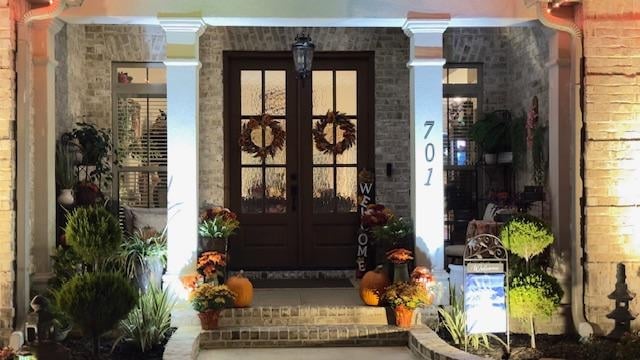Why Metal Buildings are The Most Energy-Efficient Structures?
Metal is among the most energy-efficient building materials.
Prefabricated metal structures are energy-efficient in many aspects, such as their sun-reflecting metal roofing, deeply recessed wall cavities, which facilitate appropriate insulation, and the absence of gaps that could allow for energy loss.
Furthermore, metal buildings frequently have more windows or skylights than other buildings, so electric illumination should only be utilized when essential.
Reasons that make metal buildings the most energy-efficient structures:
Metal buildings are widely recognized for their outstanding energy efficiency and cost-effectiveness.
Here’s a detailed look at why metal buildings are so efficient and financially savvy:
- Superior Insulation Capabilities: Metal roofs and walls can be coated with advanced reflective materials or finishes to bounce back a significant portion of solar radiation. This reflective capability prevents excessive heat from entering the building, keeping the interior cooler. As a result, the demand for air conditioning systems is reduced, leading to lower cooling costs during the hotter months. Metal buildings are highly adaptable when integrating high-performance insulation materials. For example, spray foam insulation can be applied directly to metal surfaces, creating a continuous and effective thermal barrier. One can install Fiberglass batts or rigid board insulation between metal panels to enhance thermal resistance. This flexibility allows for customized insulation solutions that help maintain stable indoor temperatures and reduce the need for additional heating and cooling.
- Durability and Longevity: Metal structures are renowned for their strength and durability. Unlike other materials that may degrade or require frequent repairs, metal buildings require less maintenance. This extended lifespan reduces the frequency of repairs and replacements, lowering energy and material costs. The robustness of metal structures also means that building owners experience fewer disruptions and expenses related to upkeep. Metal buildings are engineered to withstand extreme weather conditions, including high winds, heavy snowfall, and intense heat. This inherent resilience minimizes the risk of damage that could lead to energy inefficiencies, such as leaks or structural failures. By maintaining their structural integrity, metal buildings ensure energy systems operate more efficiently and require less frequent intervention.
- Thermal Mass and Temperature Regulation: Although metal does not have high thermal mass, it can effectively leverage thermal mass with appropriate insulation. Combining metal and insulating materials allows the building to absorb and gradually release heat. This thermal regulation helps maintain a consistent indoor temperature, reducing the reliance on heating and cooling systems and promoting overall energy efficiency.
- Energy-Efficient Construction: Many metal buildings feature designs with fewer seams and joints than traditional construction methods. This seamless construction minimizes air leaks, which can lead to drafts and heat loss. By reducing these inefficiencies, metal buildings achieve higher overall energy efficiency and contribute to a more comfortable indoor environment. Metal buildings frequently utilize pre-engineered components designed with energy efficiency in mind. These systems are crafted to optimize structural performance and reduce material waste. The precision of pre-engineered components also streamlines the construction process, resulting in quicker assembly, lower labor costs, and enhanced energy savings.
- Integration with Green Technologies: Metal roofs’ durability and smooth surface make them an ideal platform for supporting solar panel installations. Metal buildings are often a perfect fit for solar energy systems, which can substantially reduce energy bills by generating renewable power. This compatibility with green building practices enhances the building’s energy efficiency and underscores its potential for sustainability. Modern metal buildings often incorporate energy-efficient lighting systems, such as LED fixtures. These lighting solutions consume less electricity and have a longer lifespan than traditional lighting options. By integrating energy-efficient lighting, metal buildings can achieve additional energy savings and reduce operational costs.
- Low Heat Conductivity: Contemporary metal buildings utilize insulated metal panels that offer exceptional thermal resistance. These panels are designed to limit heat transfer between the interior and exterior of the building, maintaining a comfortable indoor climate with less reliance on heating or cooling systems. This effective insulation contributes to the building’s overall energy efficiency.
- Sustainability: Metal is one of the most available materials. Metal components can be easily reclaimed and reused at the end of a building’s life cycle or during renovations. This recycling process requires less energy than producing new metal from raw materials, making metal buildings a more sustainable choice. The use of recycled metal also reduces the environmental impact of construction.
- Reduced Cooling Costs: Metal roofs, especially those with reflective coatings, are crucial in minimizing heat absorption. By deflecting a significant portion of solar radiation away from the building, these roofs effectively reduce heat buildup, leading to lower cooling costs, particularly in regions with high temperatures and intense sunlight.
Conclusion
In summary, metal buildings offer significant energy efficiency benefits through their design, materials, and construction methods.
Their reflective and insulating properties, durability, and ability to integrate with green technologies contribute to lower operational costs and a reduced environmental footprint.
These attributes make metal buildings a practical and forward-thinking choice for energy-conscious construction.







